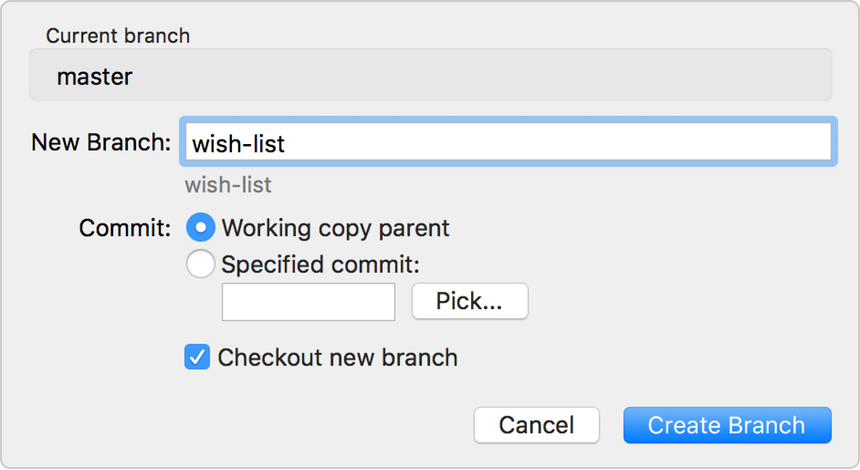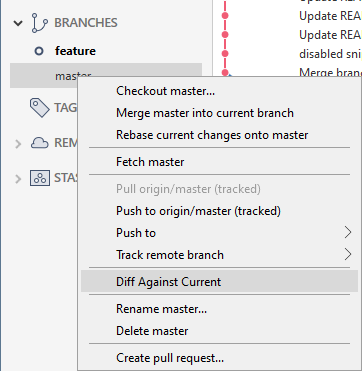



no-commit: a merge will be performed, but a merge commit will not be created so that you can inspect the result of the merge before committing. m: you will be able to edit the message for the merge commit. squash: a single commit with all pulled changes will be created on top of the current branch. ff-only: the merge will be resolved only if it is possible to fast-forward. no-ff: a merge commit will be created in all cases, even if the merge could be resolved as a fast-forward. Select the branch that you want to merge into the current branch, click Modify options and choose from the following: If you need to specify merge options, from the main menu choose VCS Git | Merge Changes to open the Merge dialog:

If you do not need to specify options for the merge, select the branch that you want to merge into the current branch and choose Merge into Current from the submenu. In the Branches popup or in the Branches pane of the Git tool window, select the target branch that you want to integrate the changes to, and choose Checkout from the context menu to switch to that branch. Git creates a new commit (M) that is referred to as a merge commit that results from combining the changes from your feature branch and master from the point where the two branches diverged. When you run merge, the changes from your feature branch are integrated into the HEAD of the target branch: It is very common that while you are working in your feature branch, your teammates continue to commit their work to master: Merging your branch into master is the most common way to do this. Suppose you have created a feature branch to work on a specific task, and want to integrate the results of your work into the main code base after you have completed and tested your feature: In Git, there are several ways to integrate changes from one branch into another:Īpply separate commits from one branch to another (cherry-pick) Apply changes from one Git branch to another


 0 kommentar(er)
0 kommentar(er)
